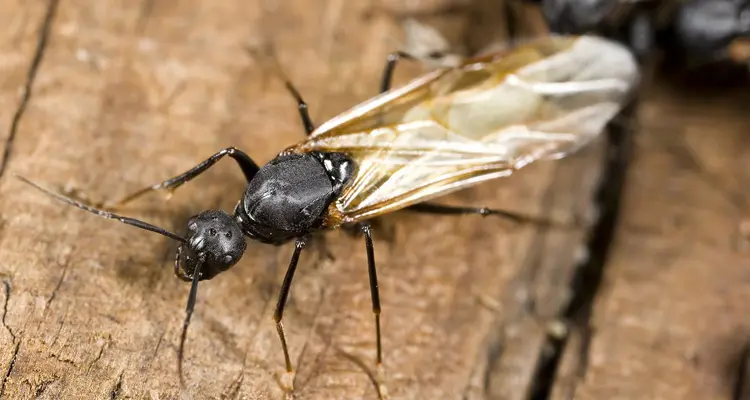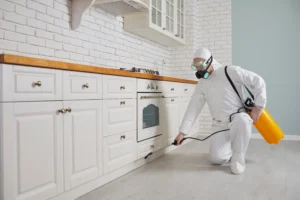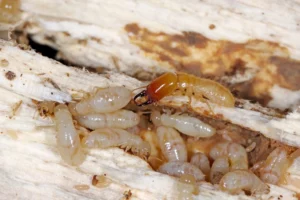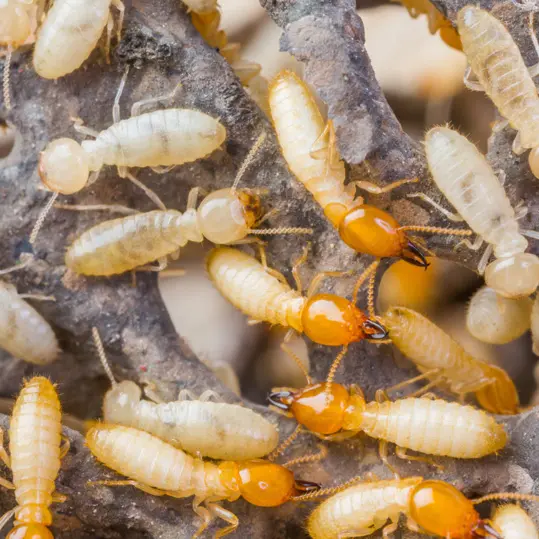Residential flying ant infestations in Edwardsville, IL, are more common during the spring and summer months. However, termite infestations can severely damage your home at any time of the year. What is the difference between a flying ant and a termite, and how can you tell if your home is infested with flying ants or termites? When should you call a professional pest control company?
Identifying Flying Ants in Edwardsville, IL
Winged ants belong to the same species as all other ants. When you see a flying ant, you see an ant at the mating stage of their development. You don’t see more flying ants because all males and the majority of female flying ants die within days of mating. Some female flying ants don’t die. Instead, they lose their wings and become queens that lay eggs to populate ant colonies.
Once ant queens are presiding over a teeming colony, they will produce a few winged female ants and thousands of male ants. Laying and hatching of eggs occur only once a year, usually after heavy rain in warmer months.
Flying ants have the same physical characteristics as wingless ants. These characteristics include:
- Distinctly segmented body– head, a small thorax, and an abdomen
- Slightly bent antennae
- Two pairs of wings differing in size
- Brownish-red or brown in color
At first glance, it’s easy to mistake flying ants for flying termites. But knowing what features to look for can help you determine if you have a flying ant infestation or a termite infestation.
Identifying Termites in Edwardsville, IL
Termites are not as dark-colored as ants. You might see flying and non-flying termites with pale brown bodies and others with brown bodies. Determining whether your home is infested with flying termites or flying ants may be difficult since wings cover their bodies. Our Edwardsville, IL pest control company technicians can come to your home and quickly identify pests by capturing a few and inspecting their bodies more closely.
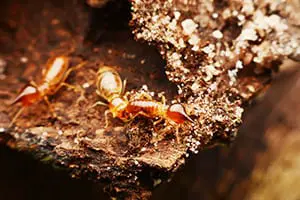
In contrast to a flying ant’s curved antennae and thin body, flying/non-flying termites exhibit the following characteristics:
- Thicker waist
- Straight antennae
- Shorter legs than flying ants
- Wings are the same length
What are Subterranean Termites?
Termites that build nests underground are called subterranean termites. Creating unusually large colonies and making distinctive mud tubes that allow them to access structures above colonies, subterranean termites eat and chew along wood grains until they have destroyed that section of wood.
Subterranean termites may also build nests in trees and crawlspaces if they somehow become trapped above their underground nests and can’t return. These nests are made from termite feces instead of wood pulp so that nests maintain a specific moisture level necessary to hatch eggs.
What are Drywood Termites?
Drywood termites live inside wood where they build nests and lay eggs. They also leave telltale piles of debris and feces outside the wood they are infesting by creating small holes through which they push out debris. Although drywood termites are more commonly found invading East and West coast buildings, they can be found infesting homes in any region of the U.S. if they are transported via wood infested with termites.
Signs of a Flying Ant Infestation
Of course, the most apparent indication you’ve got flying ants nesting in your home is that you see them flying in and around your home. Since ant colonies are composed of thousands of ants, you might hear faint crackling or rustling noises coming from walls when everything is quiet.
Gently tapping on rafters, joists, and walls with the blunt end of a screwdriver and hearing a “hollow” sound coming from the tapping could indicate a severe ant infestation. Although ants do not eat wood as termites do, they can still destroy wood over time due to their constant activities and acidic droppings.
Signs of a Termite Infestation
Discovering mud tubes, small nail-sized holes dotting wood, and tiny, sawdust-like droppings along baseboards likely means you need to call our Edwardsville, IL pest control service as soon as possible. Other possible signs of a termite infestation include finding dead termites and broken wings in your home.
Detecting a termite problem in its early stages is difficult because termites destroy wood from the inside out. Termites are eating, puncturing, or tapping wood is one way to learn if you have termites.
Why Call Pest Control in Edwardsville, IL?
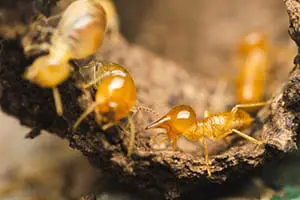 While you spend hundreds of dollars on ineffective over-the-counter pest control products to combat an infestation, large colonies of ants and termites will continue ravaging the walls and foundation of your home.
While you spend hundreds of dollars on ineffective over-the-counter pest control products to combat an infestation, large colonies of ants and termites will continue ravaging the walls and foundation of your home.
Brady Pest Control in Edwardsville, IL, uses safe, industry-specific agents that quickly and thoroughly eradicate a termite or ant infestation. Initially, we will determine what kind of pest is infesting your home, evaluate the extent of the infestation, and develop a plan of action to rid your home of destructive pests.
Call Brady Pest Control today to schedule a free pest evaluation for your Edwardsville Illinois home!


